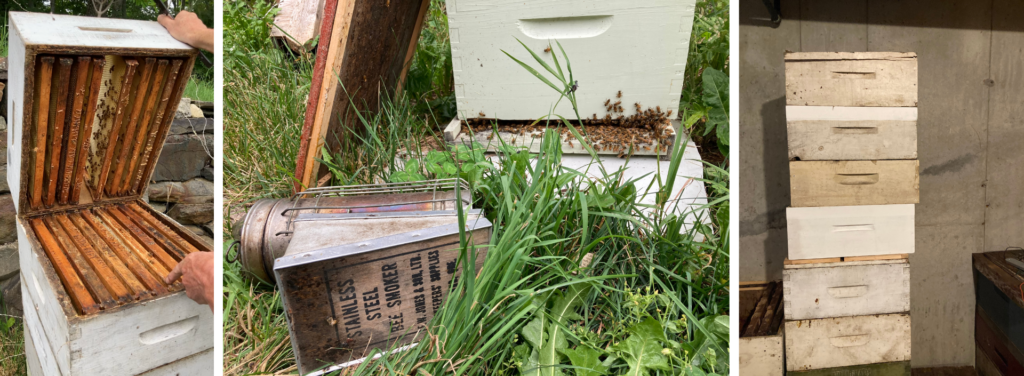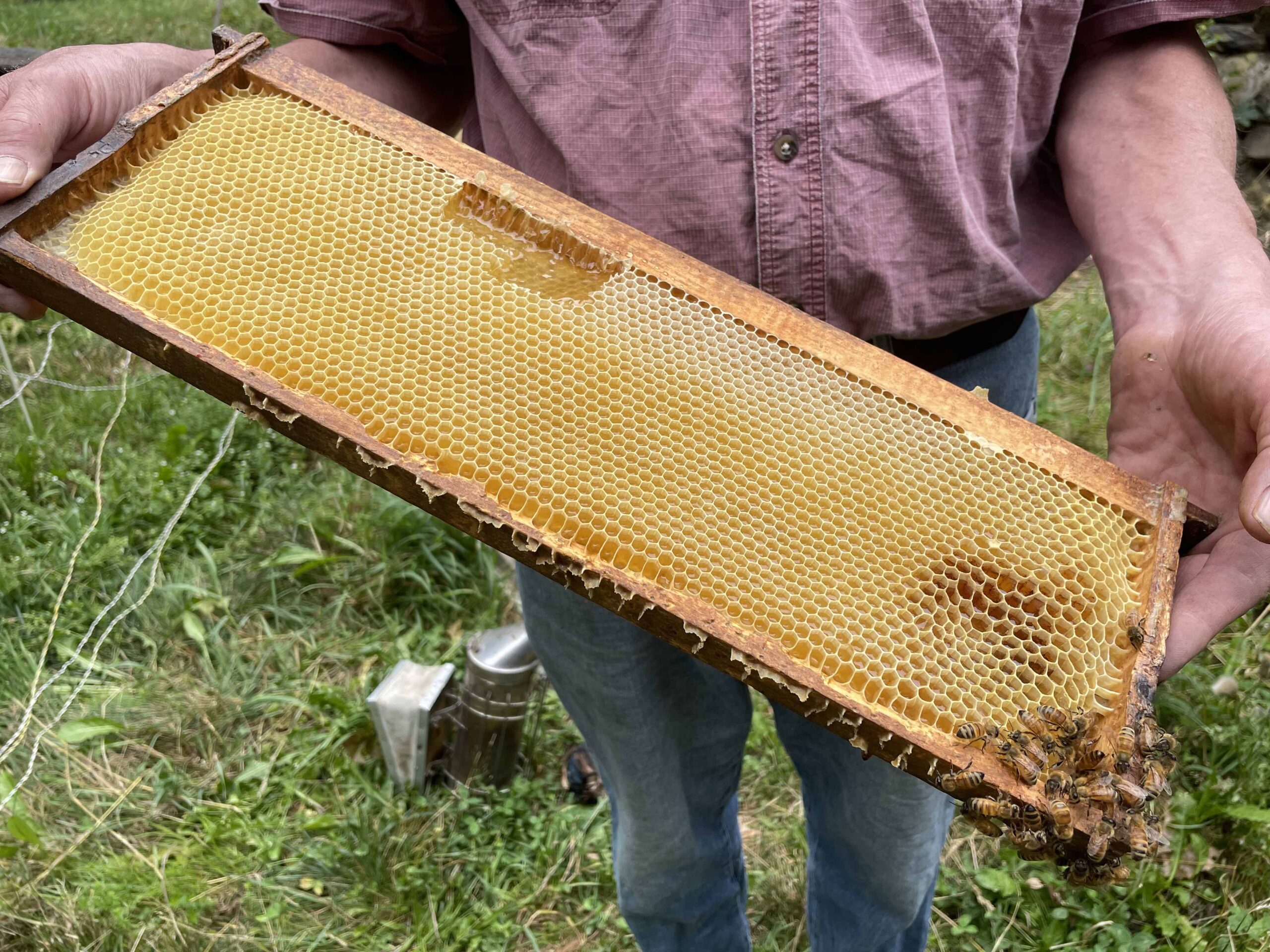We went behind the scenes with our bee guide, Todd Hardie, at his home in Vermont last month to get a tour of a hive and learn the ins and outs of beekeeping.

WHAT GOES INTO A HIVE?
We’ve laid out basic beekeeping terminology in our Honey 101: Beekeeper’s Glossary – a somewhat cheeky, highly anthropomorphized guide to honeybees.
All hives begin with a “nuc” (pronounced “nuke”, for nucleus colonies). Bee nucs contain three types of honey bees: a queen bee, male drones, and female worker bees. Each colony revolves around a single queen bee. She is larger and longer than other bees in the brood and lays all the eggs – up to 3,000 per day at peak season. Male bees are called drones; their sole job is to mate with the queen. They don’t work, don’t make honey, and can’t sting. The rest of the bees, 99% of the colony which can reach upwards of 60,000 bees, are female worker bees. Worker bees are responsible for everything from gathering pollen and nectar, building hives, making the honey, and protecting and regulating the brood.
HOW DO YOU CARE FOR A HIVE?
In the northeast, the season begins with the spring dandelion bloom, which starts to feed the bees right away. As the days get longer, more eggs are laid, more flowers are in bloom, the colony grows, and so does their production. As Todd would say, “the flow is on!”
It’s important during this time for the beekeepers to ensure the bees have space to grow their hive – they do this by adding extra layers to the hive stack as needed (these stackable boxes are called “honey supers”). If the colony runs out of space to expand and the honey begins to overflow, the hive is considered “plugged.” If the hives get plugged, bees slow down their work and ultimately start to swarm. During a swarm, about 40% of the bees take off and the scouts find a new spot in the wild, leaving the beekeeper with little or no excess honey to harvest at the end of the season.
As the days get shorter, the queen lays fewer eggs to reduce the colony size for the winter. The season winds down in the northeast after the goldenrod bloom, and the hive is (hopefully) full of excess honey. The beekeeper removes the top layers of the hive for honey extraction, making sure to leave the bees plenty of food for the winter.
Overwintering in the northeast, and around the globe, has become increasingly difficult. Colonies struggle to survive due to mites, Colony Collapse Disorder, and a myriad of other threats. Even as an incredibly experienced beekeeper, Todd has lost his colony the past five years in a row. The best way to keep bees alive is taking them south to Florida for the winter, which is how many commercial beekeepers retail their colonies.

WHAT ABOUT ALL THE SUITS AND SMOKE?
You’ll commonly see beekeepers wearing white suits to protect from bee stings. Honey bees are generally docile, but can become aggressive when they feel their hive is being threatened. Light colors are safest to wear (dark clothing resembles predators – think bears and raccoons) and it’s best to avoid strong scents like soap, perfume, or alcohol, etc.
You’ll also see beekeepers blowing smoke into the hive to calm the bees. Bees communicate using pheromones (scented chemical secretion that send various signals amongst the hive). Smoke interrupts the alarm pheromones bees send, and the smoke makes them think the hive is on fire so they gorge on honey and become sluggish.
…SO, DOES TODD EVER GET STUNG?
Of course – even beekeepers can’t avoid the occasional sting. Todd did receive one sting on the day we were there, but he takes it in stride and says a small affirmation for the bee, who gave her life defending the hive.
Learn more about Todd Hardie and our Honey Producer Partners at the links below:
Meet our bee guide: Todd Hardie
Our Partner Producers

